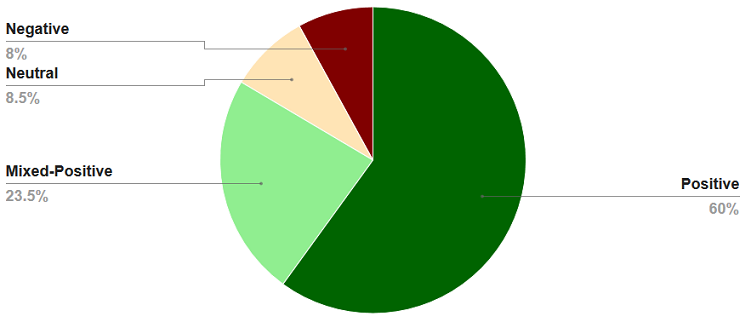
Graphic visualizes Health IT evaluation studies, 2007-2013 (n=493), related to the impact of Meaningful Use functionality on the quality, efficiency, and safety of care (or aspects of care). Positive defined as health IT improved key aspects of care but…
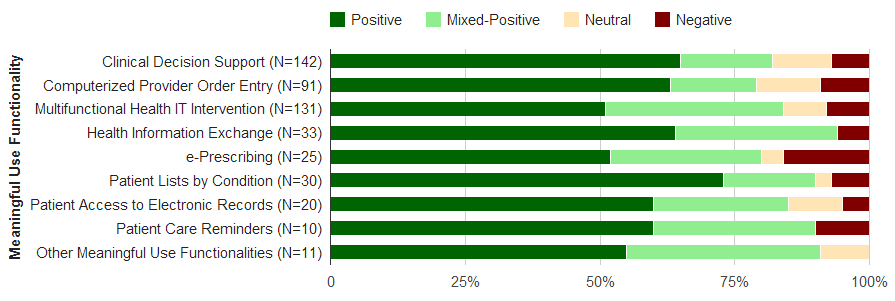
Graphic visualizes Health IT evaluation studies, 2007-2013 (n=493), related to the impact of Meaningful Use functionality on the quality, efficiency, and safety of care (or aspects of care). Positive defined as health IT improved key aspects of care but…
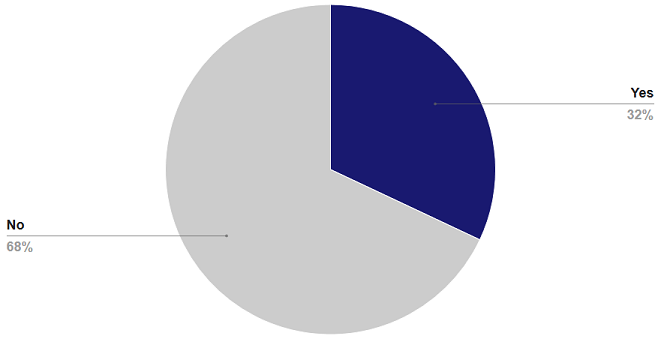
See our latest data brief on Individuals’ Access and Use of Patient Portals and Smartphone Health Apps for statistics on access to online medical information, test results, and clinical notes after 2012. Notably, in 2024, 29% of individuals reported…
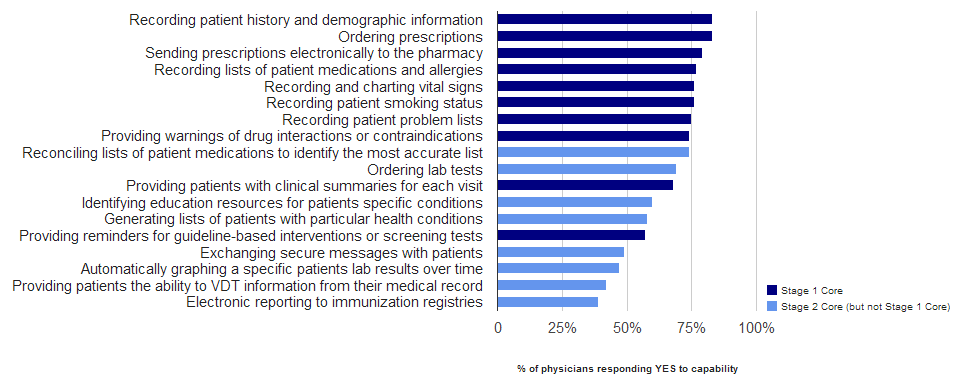
In 2013, physician adoption rates for computerized capabilities related to selected Meaningful Use Stage 1 and Stage 2 objectives ranged from 39% to 83%. About three-quarters or more of physicians had adopted computerized capabilities for recording key…
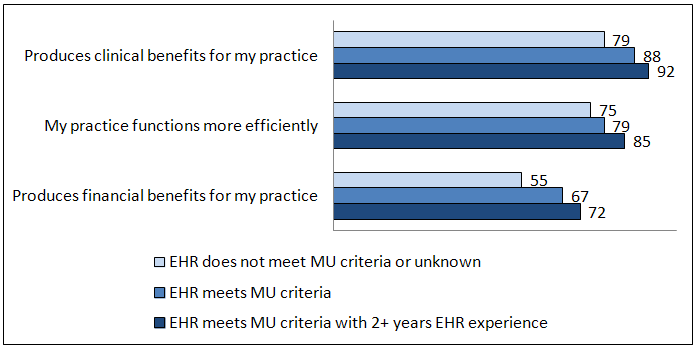
The majority of office-based physicians with electronic health records (EHR) reported their EHRs had clinical, efficiency, and financial benefits for their practice. Physicians with EHRs meeting meaningful use (MU) criteria were more likely to report…
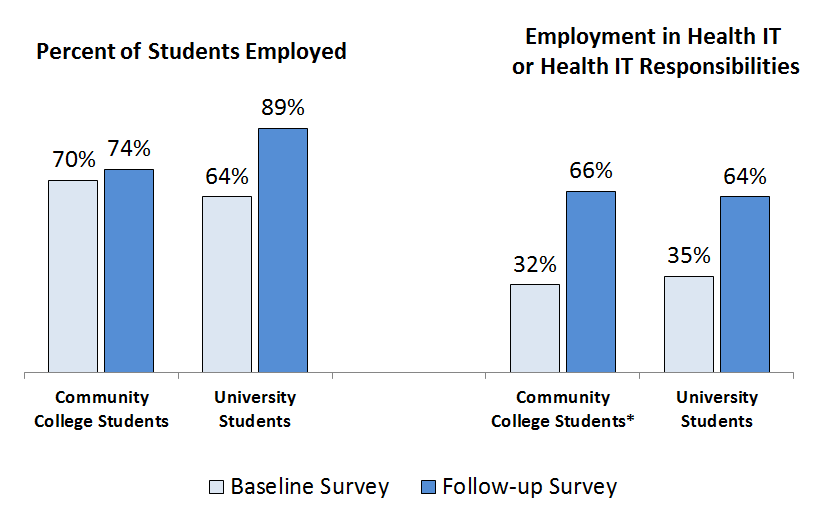
Over three-fourths of students trained by the HITECH Workforce Programs were employed within six months of completing training. Moreover, two-thirds of all trained professionals were employed in health IT or had health IT related responsibilities.
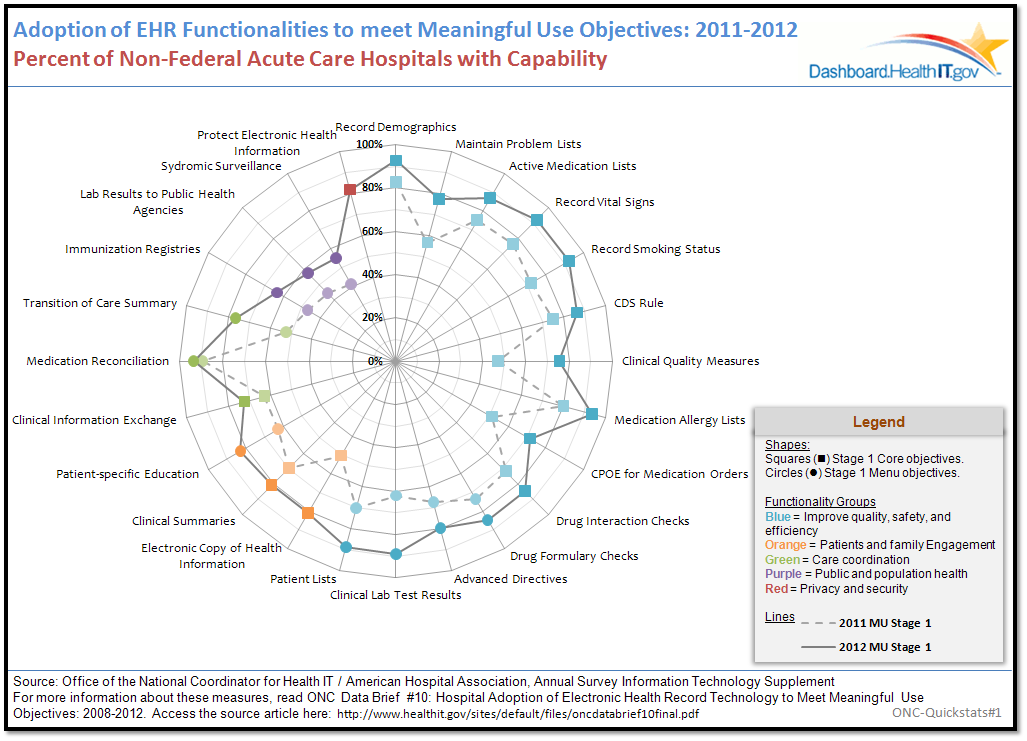
Hospitals continue to demonstrate increasing capability to meet Meaningful Use objectives. Click the radar chart to see which meaningful objectives hospitals are meeting the fastest.

